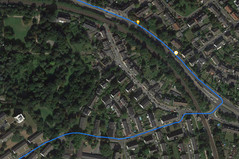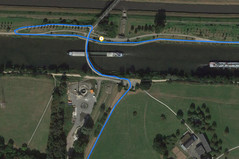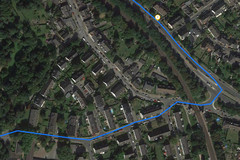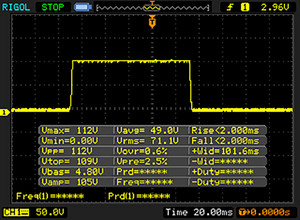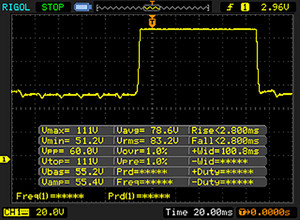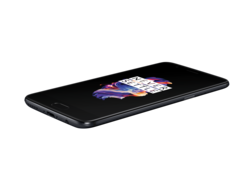Recensione breve dello Smartphone OnePlus 5
I nostri Top 10
» Top 10 Portatili Multimedia
» Top 10 Portatili Gaming
» Top 10 Portatili Gaming Leggeri
» Top 10 Portatili da Ufficio e Business economici
» Top 10 Portatili Premium da Ufficio/Business
» Top 10 Portatili sotto i 300 Euro
» Top 10 Portatili sotto i 500 Euro
» Top 10 dei Portatili Workstation
» Top 10 Subnotebooks
» Top 10 Ultrabooks
» Top 10 Convertibili
» Top 10 Tablets
» Top 10 Tablets Windows
» Top 10 Smartphones
Size Comparison
| Networking | |
| iperf3 transmit AX12 | |
| Samsung Galaxy S8 (Linksys EA8500) | |
| OnePlus 5 (Linksys EA8500, 5.0 GHz) | |
| Samsung Galaxy S7 Edge (Linksys EA8500, 5.0 GHz) | |
| OnePlus 3T | |
| Honor 8 Pro (Linksys EA8500, 5.0 GHz) | |
| iperf3 receive AX12 | |
| OnePlus 5 (Linksys EA8500, 5.0 GHz) | |
| Samsung Galaxy S8 (Linksys EA8500) | |
| Samsung Galaxy S7 Edge (Linksys EA8500, 5.0 GHz) | |
| OnePlus 3T | |
| Honor 8 Pro (Linksys EA8500, 5.0 GHz) | |
| |||||||||||||||||||||||||
Distribuzione della luminosità: 93 %
Al centro con la batteria: 426 cd/m²
Contrasto: ∞:1 (Nero: 0 cd/m²)
ΔE Color 1.6 | 0.5-29.43 Ø4.87
ΔE Greyscale 1.7 | 0.5-98 Ø5.1
Gamma: 2.25
| OnePlus 5 AMOLED, 1920x1080, 5.5" | OnePlus 3T Optic-AMOLED, 1920x1080, 5.5" | Samsung Galaxy S8 Super AMOLED, 2960x1440, 5.8" | Apple iPhone 7 Plus IPS, 1920x1080, 5.5" | Honor 8 Pro IPS, 2560x1440, 5.7" | Samsung Galaxy S7 Edge Super AMOLED, 2560x1440, 5.5" | |
|---|---|---|---|---|---|---|
| Screen | -155% | -20% | 21% | -45% | 14% | |
| Brightness middle | 426 | 421 -1% | 566 33% | 557 31% | 541 27% | 554 30% |
| Brightness | 431 | 430 0% | 564 31% | 553 28% | 514 19% | 552 28% |
| Brightness Distribution | 93 | 84 -10% | 94 1% | 97 4% | 91 -2% | 96 3% |
| Black Level * | 0.35 | 0.3 | ||||
| Colorchecker dE 2000 * | 1.6 | 7.1 -344% | 2.7 -69% | 1.4 12% | 3.2 -100% | 1.59 1% |
| Colorchecker dE 2000 max. * | 4.1 | 15.3 -273% | 5.4 -32% | 3.1 24% | 7.2 -76% | 2.56 38% |
| Greyscale dE 2000 * | 1.7 | 6.8 -300% | 3.1 -82% | 1.3 24% | 4 -135% | 2.01 -18% |
| Gamma | 2.25 98% | 2.23 99% | 2.15 102% | 2.21 100% | 2.27 97% | 2.01 109% |
| CCT | 6329 103% | 7866 83% | 6335 103% | 6667 97% | 7120 91% | 6321 103% |
| Color Space (Percent of AdobeRGB 1998) | 81.57 | 63.1 | 82.12 | |||
| Color Space (Percent of sRGB) | 99.87 | 99.83 | 99.98 | |||
| Contrast | 1591 | 1803 |
* ... Meglio usare valori piccoli
Sfarfallio dello schermo / PWM (Pulse-Width Modulation)
| flickering dello schermo / PWM rilevato | 250 Hz | ||
Il display sfarfalla a 250 Hz (Probabilmente a causa dell'uso di PWM) . La frequenza di 250 Hz è relativamente bassa, quindi gli utenti sensibili potrebbero notare il flickering ed accusare stanchezza agli occhi a questo livello di luminosità e a livelli inferiori. In confronto: 53 % di tutti i dispositivi testati non utilizza PWM per ridurre la luminosita' del display. Se è rilevato PWM, una media di 8516 (minimo: 5 - massimo: 343500) Hz è stata rilevata. | |||
Tempi di risposta del Display
| ↔ Tempi di risposta dal Nero al Bianco | ||
|---|---|---|
| 4 ms ... aumenta ↗ e diminuisce ↘ combinato | ↗ 2 ms Incremento | |
| ↘ 2 ms Calo | ||
| Lo schermo ha mostrato valori di risposta molto veloci nei nostri tests ed è molto adatto per i gaming veloce. In confronto, tutti i dispositivi di test variano da 0.1 (minimo) a 240 (massimo) ms. » 13 % di tutti i dispositivi è migliore. Questo significa che i tempi di risposta rilevati sono migliori rispettto alla media di tutti i dispositivi testati (20.8 ms). | ||
| ↔ Tempo di risposta dal 50% Grigio all'80% Grigio | ||
| 5.6 ms ... aumenta ↗ e diminuisce ↘ combinato | ↗ 2.8 ms Incremento | |
| ↘ 2.8 ms Calo | ||
| Lo schermo ha mostrato valori di risposta molto veloci nei nostri tests ed è molto adatto per i gaming veloce. In confronto, tutti i dispositivi di test variano da 0.165 (minimo) a 636 (massimo) ms. » 15 % di tutti i dispositivi è migliore. Questo significa che i tempi di risposta rilevati sono migliori rispettto alla media di tutti i dispositivi testati (32.5 ms). | ||
| AnTuTu v6 - Total Score (ordina per valore) | |
| OnePlus 5 | |
| OnePlus 3T | |
| Samsung Galaxy S8 | |
| Apple iPhone 7 Plus | |
| Honor 8 Pro | |
| Samsung Galaxy S7 Edge | |
| Sony Xperia XZ Premium | |
| HTC U11 | |
| PCMark for Android | |
| Work performance score (ordina per valore) | |
| OnePlus 5 | |
| OnePlus 3T | |
| Samsung Galaxy S8 | |
| Honor 8 Pro | |
| Samsung Galaxy S7 Edge | |
| Sony Xperia XZ Premium | |
| HTC U11 | |
| Work 2.0 performance score (ordina per valore) | |
| OnePlus 5 | |
| Samsung Galaxy S8 | |
| Honor 8 Pro | |
| Sony Xperia XZ Premium | |
| HTC U11 | |
| Geekbench 4.4 | |
| 64 Bit Single-Core Score (ordina per valore) | |
| OnePlus 5 | |
| Samsung Galaxy S8 | |
| Honor 8 Pro | |
| Sony Xperia XZ Premium | |
| HTC U11 | |
| 64 Bit Multi-Core Score (ordina per valore) | |
| OnePlus 5 | |
| Samsung Galaxy S8 | |
| Honor 8 Pro | |
| Sony Xperia XZ Premium | |
| HTC U11 | |
| Compute RenderScript Score (ordina per valore) | |
| OnePlus 5 | |
| Samsung Galaxy S8 | |
| Sony Xperia XZ Premium | |
| HTC U11 | |
| GFXBench (DX / GLBenchmark) 2.7 | |
| T-Rex Onscreen (ordina per valore) | |
| OnePlus 5 | |
| OnePlus 3T | |
| Samsung Galaxy S8 | |
| Apple iPhone 7 Plus | |
| Honor 8 Pro | |
| Samsung Galaxy S7 Edge | |
| Sony Xperia XZ Premium | |
| HTC U11 | |
| 1920x1080 T-Rex Offscreen (ordina per valore) | |
| OnePlus 5 | |
| OnePlus 3T | |
| Samsung Galaxy S8 | |
| Apple iPhone 7 Plus | |
| Honor 8 Pro | |
| Samsung Galaxy S7 Edge | |
| Sony Xperia XZ Premium | |
| HTC U11 | |
| GFXBench 3.0 | |
| on screen Manhattan Onscreen OGL (ordina per valore) | |
| OnePlus 5 | |
| OnePlus 3T | |
| Samsung Galaxy S8 | |
| Apple iPhone 7 Plus | |
| Honor 8 Pro | |
| Samsung Galaxy S7 Edge | |
| Sony Xperia XZ Premium | |
| HTC U11 | |
| 1920x1080 1080p Manhattan Offscreen (ordina per valore) | |
| OnePlus 5 | |
| OnePlus 3T | |
| Samsung Galaxy S8 | |
| Apple iPhone 7 Plus | |
| Honor 8 Pro | |
| Samsung Galaxy S7 Edge | |
| Sony Xperia XZ Premium | |
| HTC U11 | |
| GFXBench 3.1 | |
| on screen Manhattan ES 3.1 Onscreen (ordina per valore) | |
| OnePlus 5 | |
| OnePlus 3T | |
| Samsung Galaxy S8 | |
| Apple iPhone 7 Plus | |
| Honor 8 Pro | |
| Samsung Galaxy S7 Edge | |
| Sony Xperia XZ Premium | |
| HTC U11 | |
| 1920x1080 Manhattan ES 3.1 Offscreen (ordina per valore) | |
| OnePlus 5 | |
| OnePlus 3T | |
| Samsung Galaxy S8 | |
| Apple iPhone 7 Plus | |
| Honor 8 Pro | |
| Samsung Galaxy S7 Edge | |
| Sony Xperia XZ Premium | |
| HTC U11 | |
| GFXBench | |
| on screen Car Chase Onscreen (ordina per valore) | |
| OnePlus 5 | |
| OnePlus 3T | |
| Samsung Galaxy S8 | |
| Honor 8 Pro | |
| Samsung Galaxy S7 Edge | |
| Sony Xperia XZ Premium | |
| HTC U11 | |
| 1920x1080 Car Chase Offscreen (ordina per valore) | |
| OnePlus 5 | |
| OnePlus 3T | |
| Samsung Galaxy S8 | |
| Honor 8 Pro | |
| Samsung Galaxy S7 Edge | |
| Sony Xperia XZ Premium | |
| HTC U11 | |
| Lightmark - 1920x1080 1080p (ordina per valore) | |
| Samsung Galaxy S8 | |
| Samsung Galaxy S7 Edge | |
| HTC U11 | |
| Basemark X 1.1 | |
| Medium Quality (ordina per valore) | |
| Samsung Galaxy S8 | |
| Samsung Galaxy S7 Edge | |
| HTC U11 | |
| High Quality (ordina per valore) | |
| Samsung Galaxy S8 | |
| Samsung Galaxy S7 Edge | |
| HTC U11 | |
| Basemark ES 3.1 / Metal - offscreen Overall Score (ordina per valore) | |
| Samsung Galaxy S8 | |
| Apple iPhone 7 Plus | |
| Samsung Galaxy S7 Edge | |
| HTC U11 | |
| Epic Citadel - Ultra High Quality (ordina per valore) | |
| Samsung Galaxy S8 | |
| Samsung Galaxy S7 Edge | |
| HTC U11 | |
| JetStream 1.1 - Total Score | |
| Apple iPhone 7 Plus | |
| Samsung Galaxy S7 Edge | |
| OnePlus 5 | |
| HTC U11 | |
| Samsung Galaxy S8 | |
| Sony Xperia XZ Premium | |
| Honor 8 Pro | |
| OnePlus 3T | |
| Octane V2 - Total Score | |
| Apple iPhone 7 Plus | |
| Samsung Galaxy S7 Edge | |
| Samsung Galaxy S8 | |
| OnePlus 5 | |
| HTC U11 | |
| Sony Xperia XZ Premium | |
| Honor 8 Pro | |
| OnePlus 3T | |
| Mozilla Kraken 1.1 - Total | |
| Sony Xperia XZ Premium | |
| Honor 8 Pro | |
| HTC U11 | |
| OnePlus 3T | |
| OnePlus 5 | |
| Samsung Galaxy S7 Edge | |
| Samsung Galaxy S8 | |
| Apple iPhone 7 Plus | |
| WebXPRT 2015 - Overall | |
| Apple iPhone 7 Plus | |
| Samsung Galaxy S8 | |
| Samsung Galaxy S7 Edge | |
| HTC U11 | |
| OnePlus 5 | |
| Sony Xperia XZ Premium | |
| Honor 8 Pro | |
| OnePlus 3T | |
* ... Meglio usare valori piccoli
| OnePlus 5 | OnePlus 3T | Samsung Galaxy S8 | Honor 8 Pro | Samsung Galaxy S7 Edge | Sony Xperia XZ Premium | HTC U11 | |
|---|---|---|---|---|---|---|---|
| AndroBench 3-5 | 53% | -7% | 174% | -30% | -18% | 70% | |
| Sequential Read 256KB | 748 | 436.4 -42% | 793 6% | 738 -1% | 487.3 -35% | 687 -8% | 717 -4% |
| Sequential Write 256KB | 201.5 | 165.3 -18% | 193.2 -4% | 187.1 -7% | 145.1 -28% | 194 -4% | 206.4 2% |
| Random Read 4KB | 141 | 123.6 -12% | 127.2 -10% | 166.4 18% | 86.7 -39% | 74.1 -47% | 91.4 -35% |
| Random Write 4KB | 19.3 | 74.4 285% | 15.25 -21% | 151.6 685% | 15.79 -18% | 17.2 -11% | 80 315% |
| Sequential Read 256KB SDCard | 63.9 | 54.2 | 76.4 | 36.79 | 68.8 | ||
| Sequential Write 256KB SDCard | 53.5 | 32.16 | 50.4 | 33.31 | 46.25 |
| Asphalt 8: Airborne | |||
| Settaggi | Valore | ||
| high | 30 fps | ||
| very low | 30 fps | ||
| Dead Trigger 2 | |||
| Settaggi | Valore | ||
| high | 60 fps | ||
(+) La temperatura massima sul lato superiore è di 37.6 °C / 100 F, rispetto alla media di 35.1 °C / 95 F, che varia da 21.9 a 63.7 °C per questa classe Smartphone.
(+) Il lato inferiore si riscalda fino ad un massimo di 35.8 °C / 96 F, rispetto alla media di 33.9 °C / 93 F
(+) In idle, la temperatura media del lato superiore è di 27.4 °C / 81 F, rispetto alla media deld ispositivo di 32.8 °C / 91 F.
OnePlus 5 analisi audio
(+) | gli altoparlanti sono relativamente potenti (87.8 dB)
Bassi 100 - 315 Hz
(-) | quasi nessun basso - in media 30.9% inferiori alla media
(±) | la linearità dei bassi è media (9.4% delta rispetto alla precedente frequenza)
Medi 400 - 2000 Hz
(+) | medi bilanciati - solo only 4.8% rispetto alla media
(+) | medi lineari (5% delta rispetto alla precedente frequenza)
Alti 2 - 16 kHz
(+) | Alti bilanciati - appena 3.2% dalla media
(+) | alti lineari (3.2% delta rispetto alla precedente frequenza)
Nel complesso 100 - 16.000 Hz
(±) | la linearità complessiva del suono è media (20.4% di differenza rispetto alla media
Rispetto alla stessa classe
» 31% di tutti i dispositivi testati in questa classe è stato migliore, 10% simile, 59% peggiore
» Il migliore ha avuto un delta di 12%, medio di 36%, peggiore di 134%
Rispetto a tutti i dispositivi testati
» 51% di tutti i dispositivi testati in questa classe è stato migliore, 8% similare, 41% peggiore
» Il migliore ha avuto un delta di 4%, medio di 24%, peggiore di 134%
Huawei P10 Plus analisi audio
(±) | potenza degli altiparlanti media ma buona (75.6 dB)
Bassi 100 - 315 Hz
(-) | quasi nessun basso - in media 17.3% inferiori alla media
(±) | la linearità dei bassi è media (12.4% delta rispetto alla precedente frequenza)
Medi 400 - 2000 Hz
(+) | medi bilanciati - solo only 3.1% rispetto alla media
(+) | medi lineari (6.9% delta rispetto alla precedente frequenza)
Alti 2 - 16 kHz
(+) | Alti bilanciati - appena 1% dalla media
(+) | alti lineari (3.9% delta rispetto alla precedente frequenza)
Nel complesso 100 - 16.000 Hz
(±) | la linearità complessiva del suono è media (16.8% di differenza rispetto alla media
Rispetto alla stessa classe
» 7% di tutti i dispositivi testati in questa classe è stato migliore, 6% simile, 87% peggiore
» Il migliore ha avuto un delta di 12%, medio di 36%, peggiore di 134%
Rispetto a tutti i dispositivi testati
» 27% di tutti i dispositivi testati in questa classe è stato migliore, 7% similare, 66% peggiore
» Il migliore ha avuto un delta di 4%, medio di 24%, peggiore di 134%
| Off / Standby | |
| Idle | |
| Sotto carico |
|
Leggenda:
min: | |
| OnePlus 5 3300 mAh | OnePlus 3T 3400 mAh | Samsung Galaxy S8 3000 mAh | Apple iPhone 7 Plus 2915 mAh | Honor 8 Pro 4000 mAh | Samsung Galaxy S7 Edge 3600 mAh | |
|---|---|---|---|---|---|---|
| Power Consumption | -11% | 24% | -13% | -33% | 14% | |
| Idle Minimum * | 0.73 | 0.61 16% | 0.78 -7% | 0.77 -5% | 0.98 -34% | 0.63 14% |
| Idle Average * | 1.44 | 1.77 -23% | 1.1 24% | 2.04 -42% | 2.27 -58% | 1.1 24% |
| Idle Maximum * | 1.5 | 1.81 -21% | 1.16 23% | 2.24 -49% | 2.36 -57% | 1.56 -4% |
| Load Average * | 6.91 | 6.67 3% | 4.15 40% | 4.69 32% | 6.58 5% | 5.95 14% |
| Load Maximum * | 8.51 | 10.98 -29% | 5.12 40% | 8.66 -2% | 10.12 -19% | 6.7 21% |
* ... Meglio usare valori piccoli
| OnePlus 5 3300 mAh | OnePlus 3T 3400 mAh | Samsung Galaxy S8 3000 mAh | Apple iPhone 7 Plus 2915 mAh | Honor 8 Pro 4000 mAh | Samsung Galaxy S7 Edge 3600 mAh | |
|---|---|---|---|---|---|---|
| Autonomia della batteria | 8% | 20% | 14% | -5% | 39% | |
| Reader / Idle | 1534 | 1423 -7% | 1667 9% | 1835 20% | 1378 -10% | 1663 8% |
| H.264 | 623 | 810 30% | 771 24% | 813 30% | 675 8% | 914 47% |
| WiFi v1.3 | 518 | 494 -5% | 719 39% | 587 13% | 573 11% | 732 41% |
| Load | 247 | 282 14% | 264 7% | 225 -9% | 181 -27% | 392 59% |
Pro
Contro
Ci sono molte domande interessanti a cui rispondere dopo la nostra recensione dello OnePlus 5. Quindi iniziamo:
Lo OnePlus 5 è potenzialmente un "avversario temibile" per le ammiraglie? Bene, dipende da quello che via aspettate da un'ammiraglia. Il dispositivo regge il confronto con quelli più costosi per quanto riguarda le prestazioni, ma non va bene che lo OnePlus 5 sia in difficoltà con i benchmarks. Il dispositivo ha molte features, ma non supporta la ricarica wireless, una porta USB o uno schermo con risoluzione elevata. La fotocamera non regge il confronto con quelle di altri smartphones high-end.
Vale la pena passare a questa nuova versione da un precedente OnePlus? Se avete uno OnePlus 2 o un modello precedente, sicuramente ne guadagnerete in prestazioni, un sistema aggiornato e un case più sottile. Lo OnePlus 3 o 3T sono una storia diversa. Non pensiamo valga la pena passare al nuovo modello in questo caso, perché non cambia molto.
Lo OnePlus 5 è ancora un affare? Si, lo OnePlus 5 offre prestazioni elevate ad un prezzo economico. Ma a causa del nuovo prezzo ora la concorrenza si fa sentire, ad esempio l'Honor 8 Pro o altri modelli recenti come il Samsung Galaxy S7 Edge. Mentre lo OnePlus One costava $299 ed era senza dubbio lo smartphone più economico considerando le sue features, $530 per lo OnePlus 5 va ancora bene, ma non è un affare insuperabile.
Quale è la nostra impressione complessiva dello OnePlus 5? L'eccitazione dei primi anni è venuta a mancare. Uno dei motivi è lo schermo che è stato installato in modo sbagliato, creando un effetto strano, così come il bug delle chiamate di emergenza. Questi problemi potrebbero essere difficili da accettare per un prezzo premium. Allo stesso tempo il produttore spesso reagisce rapidamente ed in modo esemplare ai difetti rilevati: in questo caso per le chiamate di emergenza in pochi giorni hanno rilasciato un update. Almeno hanno risposto ai nostri commenti relativi agli strani risultati dei benchmarks ed aperto una comunicazione. Nonostante tutti i problemi: lo OnePlus 5 ha davvero pochi concorrenti per il prezzo. Un software Android puro, molti accessori, schermo con colore buono e dual SIM tra i punti di forza.
lo OnePlus 5 è uno smartphone relativamente economico con qualità da ammiraglia che scivola un po' sulla qualità della fotocamera ma per il resto convince: performance, schermo, case e qualità voce sono eccellenti.
Lo OnePlus 5 non è perfetto, ma è economico ed uno smartphone nel complesso buono.
Nota: si tratta di una recensione breve, con alcune sezioni non tradotte, per la versione integrale in inglese guardate qui.
OnePlus 5
- 07/25/2017 v6 (old)
Florian Wimmer













